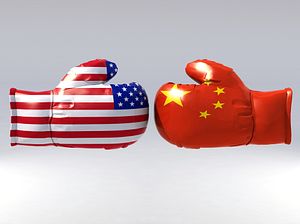Regarding the Sino-Japanese territorial dispute in the East China Sea, U.S. President Barack Obama’s recent position was loud and clear: “And let me reiterate that our treaty commitment to Japan’s security is absolute, and Article 5 covers all territories under Japan’s administration, including the Senkaku Islands.” This confirmation of Washington’s military commitment to Tokyo in a possible clash between China and Japan was called “myopic” by the Chinese state news agency.
Given the current situation, even the slightest possibility of U.S. military involvement may push Beijing to alter its expectations and act more decisively and consistently regarding the enduring dispute, all while still trying to prevent the situation from getting worse. After all, recent joint U.S.-Japan military exercises demonstrated to China that the U.S. has already prepared several operation plans for possible military assistance. In fact, China is concerned not only about the probability of U.S. military intervention, but also about the long-term impact of this reassurance toward Japan and the complexity it may add to the current Sino-Japanese standoff.
Despite U.S. assurances, in Beijing’s view, a number of signs indicate that the U.S. policy toward China intends to “contain” rather than “engage.” The U.S. supports the Philippines on the South China Sea dispute, reiterates Washington’s security commitment to Japan on the East China Sea dispute, and has also agreed to sell more advanced arms to Taiwan. In almost every dispute that involves China, the U.S. seems to automatically support any party that has trouble with China, either directly or indirectly. Meanwhile, the U.S. labels China’s overseas economic activities as neo-colonialism and calls China’s territorial disputes with its neighbors evidence of expansionism. The U.S. has also called China one of the biggest sources for cyber espionage activities (although Mr. Edward Snowden told the world another story).
For the U.S., the rise of China just seems to be an uncomfortable fit with the dominant, U.S.-led system. So the U.S. may rely on its still-dominant power and its alliance relations (especially with its key partners) to sustain its supremacy in and beyond the Asia-Pacific region — particularly without making substantial compromises to accommodate China’s “core interests.” By containing China with regard to Beijing’s “core interests,” the U.S. is trying to gain strategic advantages.
Such measures and policies may put real pressure on China in the near future, but they are risky. The fact is that the U.S. might have already been hijacked by its military alliances in East Asia and thus finds it increasingly difficult to handle its relations with both its traditional allies and a rapidly emerging China. The U.S. faces a difficult situation: if it fails to subdue a powerful China, it loses respect and trust from its allies. Hence, at least for the time being, the U.S. is more willing to hold its ground, especially with support and assistance from its traditional allies.
But this expedient makeshift can hardly solve the fundamental problem. A rising China, like other great powers, needs strategic room for its survival and further development. China surely needs to adapt to regional and global arrangements, while the international community also needs to accommodate or constructively engage this newly emerged great power.
In the 1970s and 1980s, improvements in China-U.S. relations contributed to Washington’s strong and successful containment of the former Soviet Union in Europe – the traditional region of concern for the U.S. But the Cold War has been over for decades. The same policy and approach will not necessarily work for an emerged China under completely different international conditions. And that’s not even mentioning the challenge of confronting two great powers (China and Russia) simultaneously. However, the current situation suggests that the U.S. is in danger of falling into the “containment trap” – the more it loses its global supremacy and the more it expects support and assistance from its traditional allies, the more obligated the U.S. will feel to push forward hard-line policies toward China. Such containment might work, given comprehensive and unconditional support from U.S. allies, but reality is rarely that simple. Meanwhile, the U.S. should not underestimate China’s strategic determination and counter-measures to containment.
That being said, the rise of China and its disputes with neighboring countries inevitably pose challenges for the long-established regional and global arrangements. Hence China’s rise may cause concerns. In view of this, China needs to handle and adjust its diplomacy very cautiously to avoid unnecessary misunderstandings and misperceptions. On the other hand, particularly in East Asia, the current power structure and regional arrangements were built either during the Cold War era, when there was confrontation between two super powers, or after the Cold War, when U.S. unilateral supremacy prevailed. During these two periods, China did not need and could not afford sizable strategic room. That’s no longer the case today, when China has already become a sizable great power and is still rising.
In the long run, the U.S. cannot contain China. Accordingly, rather than relying on excessive containment or a check-and-balance approach, the world and especially the U.S. might find more opportunities from deeper and more constructive policies of engagement with China. Hopefully this engagement can truly be a win-win game.
































